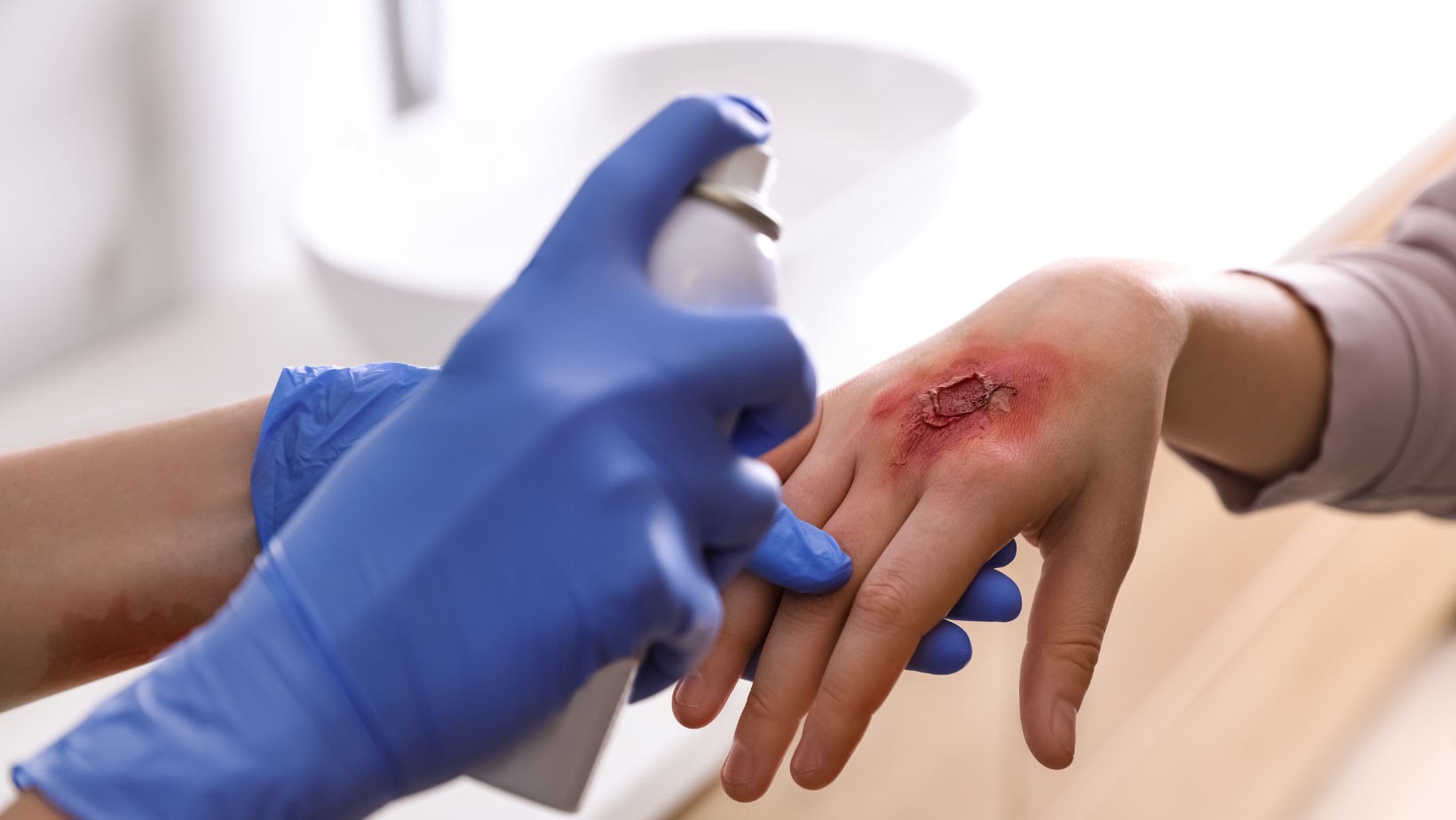
Second-Degree Burns and Third-Degree Burns are traumatic injuries to the skin and underlying tissues, commonly resulting from heat, chemicals, electricity, or radiation exposure. They are categorized based on their severity and the layers of skin they affect. The American Burn Association states that roughly 486,000 patients receive hospital and emergency room treatment for burns each year. Recognizing the differences between burn degrees is critical for effective treatment, potential complications prevention, and determining prognosis.
Second-Degree vs Third-Degree Burns
Second-degree burns are often the result of exposure to open flames, hot liquids, steam, or certain chemicals. Unlike first-degree burns, which affect only the epidermis and result in mild redness, second-degree burns have distinct features:
- Redness and Swelling: The skin often turns intensely red and is accompanied by swelling due to inflammatory responses.
- Blisters: These are fluid-filled pockets that form on the skin surface, signaling underlying tissue damage.
- Wet Appearance: As the burn damages blood vessels, it can cause fluids to leak, giving the burn a moist or damp appearance.
- Pain: Second-degree burns are typically painful. This is because the injury extends to the dermis, where many nerve endings are present.
Third-degree burns are among the most severe types of burns. They affect the deepest layers of skin and can even damage the tissues underneath, like fat and muscle. These burns can come from direct flames, scalding liquids, electricity, or chemicals. A few examples are:
- Feel: The skin might feel leathery.
- Color: The burned area can look white, tan, brown, or even charred.
- Pain: Surprisingly, the burn area might not hurt because the nerves are damaged, but areas around it can be painful.
- Blisters: These burns usually don’t have blisters since the whole skin layer is affected.
Third-degree burns need serious medical attention. Treatment can include surgeries or skin grafts. Apart from physical healing, patients might need support to deal with scars and emotional trauma. (Kahn [1] , 2023)
Treating Second-Degree and Third-Degree Burns
If someone experiences a burn, immediately cool it under running water for about 10 minutes or until the pain subsides, then shield it from further harm. Gently wrap the burn with a clean, non-sticky bandage. Administer over-the-counter pain relievers, following the advised dosage, and apply antibiotic ointment unless a rash forms or pain intensifies. To aid in healing, increase fluid intake for several days. Urgently consult a doctor if the burn extends over 3 inches or is located on critical areas like the face, hands, feet, or major joints.
For third-degree burns, avoid self-treatment and call 911 immediately. Don’t touch or immerse the burn in water. Elevate the injury to reduce swelling. Monitor for shock symptoms like pale skin or shallow breathing. If these manifest or the person vomits, gently turn them on their side. Always seek professional care. (National Institute of General Medical Sciences)
Burn Complications
Burns that are deep or cover large areas can lead to several complications:
- Infections: Burns can become infected with bacteria, which might progress to sepsis if the bacteria enter the bloodstream.
- Fluid Imbalance: Significant fluid loss can occur, potentially leading to hypovolemia or low blood volume.
- Hypothermia: The body’s ability to regulate temperature can be compromised, resulting in a dangerously low body temperature.
- Respiratory Issues: Inhalation of hot air or smoke during the burn incident can cause breathing difficulties.
- Scarring: Overproduction of scar tissue can lead to keloids, which are raised and sometimes discolored scars.
- Mobility Issues: Scar tissue can cause contractures, where the skin, muscles, or tendons tighten and shorten, affecting bone and joint movement. (WebMD)
Preventing Burns
Most burns occur at home, with infants and young children especially at risk. To prevent burns, it’s essential to practice safety measures like keeping kids away from the kitchen during cooking, using fire extinguishers and smoke detectors, setting water heaters below 120°F, and securing matches, lighters, and chemicals. Additionally, be cautious with electrical cords, wear sunscreen, ensure cigarettes are fully extinguished, and regularly clean dryer lint traps. Having and practicing a fire escape plan with family is vital, and in case of a fire, remember to crawl under smoke to avoid inhalation risks. (Mayo Clinic [2] , 2022)
Severe burns can lead to long-term health problems, from infections to breathing issues. Getting immediate and expert care to handle these complications effectively is crucial. Proper treatment not only aids in healing but also helps prevent lasting damage and ensure a better quality of life for the individual.
Works Cited
Kahn, April. “Burns: Types, Symptoms, and Treatments.” Healthline, Healthline Media, 25 Apr. 2023, www.healthline.com/health/burns.
National Institute of General Medical Sciences. “Burns.” National Institute of General Medical Sciences, U.S. Department of Health and Human Services, nigms.nih.gov/education/fact-sheets/Pages/burns.aspx.
WebMD. “Treating Pain Caused by Burns: 1st, 2nd, and 3rd Degree.” WebMD, www.webmd.com/pain-management/pain-caused-by-burns.
Mayo Clinic. “Burns.” Mayo Clinic, Mayo Foundation for Medical Education and Research, 13 Aug. 2022, www.mayoclinic.org/diseases-conditions/burns/symptoms-causes/syc-20370539.
